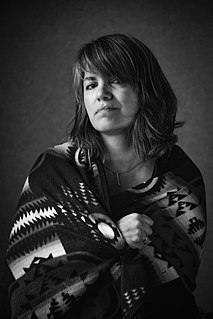 W
WJoane Cardinal-Schubert was an artist of Kainaiwa ancestry. She was a member of the Royal Canadian Academy of Arts. She was an activist for native sovereignty.
 W
WDouglas Joseph Cardinal is an Indigenous Canadian architect based in Ottawa, Ontario. His flowing architecture marked with smooth curvilinear forms is influenced by his Aboriginal heritage as well as European Expressionist architecture. His passion for unconventional forms and appreciation of nature and landscape were present in his life from a very young age, and consequently developed into the unique architectural style he has employed throughout his career. Cardinal is perhaps best known for his designs of the Canadian Museum of History in Gatineau, Quebec (1989) and the National Museum of the American Indian in Washington, D.C. (1998). He is considered one of Canada's most influential contemporary Indigenous architects.
 W
WWilliam Commanda OC was an Algonquin elder, spiritual leader, and promoter of environmental stewardship. Commanda served as Band Chief of the Kitigàn-zìbì Anishinàbeg First Nation near Maniwaki, Quebec, from 1951 to 1970. In his life, he worked as a guide, a trapper and woodsman, and was a skilled craftsman and artisan who excelled at constructing birch bark canoes. He was Keeper of several Algonquin wampum shell belts, which held records of prophecies, history, treaties and agreements. In 2008, Commanda was appointed to the rank of officer of the Order of Canada.
 W
WDayna Danger is a Two-Spirit/Queer, hard femme, Métis/Saulteaux/Polish visual artist. Danger was born and raised in Winnipeg, Manitoba on Treaty 1 territory, and now resides in Tio'tiá:ke (Montréal). Danger explores various mediums in their creations including sculpture, photography, performance and video. Danger's work explores the relationships between representation, objectification, and empowerment. They also engage with themes of intimacy, gender, sexuality, BDSM, kink, and mixed identities. Danger’s artwork from their Big’Uns series was on the front cover of the Summer 2017 Canadian Art Magazine issue. A white male curator once commented that he “could not see himself” in Danger's art, and Danger’s response was that “[t]his work is not for you.” Later, when Danger’s photo from Big’Uns was made the cover of the issue, the editor’s letter for the issue was titled “This Work is Not For You”. Collaboration and creating work for underrepresented groups are among Danger's major focuses. Danger uses singular they/them pronouns.
 W
WBeau Dick was a Kwakwaka'wakw Northwest Coast artist and Chief who lived and worked in Alert Bay, British Columbia, Canada. He was a contemporary artist, activist and hereditary Chief from the Namgis First Nation. Dick was an award winning artist with an extensive national and international exhibition history.]
 W
WShirley Fletcher Horn is the first chancellor of Algoma University. Born in Chapleau, Ontario Horn attended the St. John's Indian Residential School and the Shingwauk Indian Residential School. She is well known for her advocacy work relating to the legacy of residential schools in Canada. She is a member of Missanabie Cree First Nation and she served as Missanabie's Chief for six years.
 W
WJaimie Isaac is a Winnipeg-based Anishinaabe artist and curator.
 W
WSarah Lavalley (1895-1991) was a nurse, craftswoman, and community leader from Golden Lake Reserve. In addition to her social work, she is known for supporting cultural exchange between the Indigenous community that she was a part of and non-Indigenous people, as well as supporting cultural continuity through her teaching throughout her life. Lavalley was also known as a skilled maker using traditional patterns and stitching techniques, making wearable crafts like moccasins and mittens for instance.
 W
WMarguerite Vincent Lawinonkié (1783-1865) was a famous Huron-Wendat craftswoman who helped save the Huron-Wendat community. In 2008, the Canadian government deemed her a 'Person of National Historic Significance' for the quality of her art. Her son was Francois-Xavier Picard Tahourenche.
 W
WRoxanne Martin / Bezhik Anungo Kwe is an Anishinaabe artist, educator, author, jingle-dress dancer, LGTBQA2+ activist and small-business entrepreneur. She is the niece and goddaughter of artist Cecil Youngfox. Roxanne is from Wiikwemkoong First Nation and Serpent River First Nation, she is of the Eagle clan.
 W
WNorval Morrisseau, CM, also known as Copper Thunderbird, was an Indigenous Canadian artist from the Bingwi Neyaashi Anishinaabek First Nation. Known as the "Picasso of the North", Morrisseau created works depicting the legends of his people, the cultural and political tensions between native Canadian and European traditions, his existential struggles, and his deep spirituality and mysticism. His style is characterized by thick black outlines and bright colors. He founded the Woodlands School of Canadian art and was a prominent member of the “Indian Group of Seven”.
 W
WNadia Myre is a contemporary visual artist from Québec and an Algonquin member of the Kitigan Zibi Anishinaabeg First Nation, who lives and works in Montréal. For over a decade, her multi-disciplinary practice has been inspired by participant involvement as well as recurring themes of identity, language, longing and loss. Of the artist, Canadian Art Magazine writes, "Nadia Myre’s work weaves together complex histories of Aboriginal identity, nationhood, memory and handicraft, using beadwork techniques to craft exquisite and laborious works."
 W
WMarianne Nicolson is a Dzawada’enuxw visual artist whose work explores the margins at which public access to First Nations artifacts clashes with the preservation of indigenous cultural knowledge.
 W
WJeneen Frei Njootli (they/them) is an interdisciplinary Vuntut Gwitchin artist known primarily for their work with sound and textiles, performance, fashion, workshops, and barbeques.
 W
WThe Professional Native Indian Artists Incorporation (PNIAI), informally known as the Indian Group of Seven, was a group of First Nations artists from Canada, with one from the United States. Founded in November 1973, they were Indigenous painters who exhibited in the larger art world. The nickname is an allusion to the Group of Seven, a Euro-Canadian group of painters from the early 20th century.
 W
WBuffy Sainte-Marie, is an Indigenous Canadian-American singer-songwriter, musician, Oscar-winning composer, visual artist, educator, pacifist, and social activist. Throughout her career in all of these areas, her work has focused on issues facing Indigenous peoples of the Americas. Her singing and writing repertoire also includes subjects of love, war, religion, and mysticism. She has won recognition, awards and honours for her music as well as her work in education and social activism. Among her most popular songs are "Universal Soldier", "Cod'ine", "Until It's Time for You to Go", "Now That the Buffalo's Gone", and her covers of Mickey Newbury's "Mister Can't You See" and Joni Mitchell's "The Circle Game". Her music has been recorded by Elvis Presley, Neil Diamond, Donovan, Joe Cocker, Jennifer Warnes, Barbra Streisand, Shirley Bassey, Roberta Flack, Janis Joplin, and Glen Campbell.
 W
WShanawdithit, also noted as Shawnadithititis, Shawnawdithit, Nancy April and Nancy Shanawdithit, was the last known living member of the Beothuk people, who inhabited what is now Newfoundland, Canada. Remembered for her contributions to the historical understanding of Beothuk culture, including drawings depicting interactions with British settlers, Shanawdithit died of tuberculosis in St. John's, Newfoundland on June 6, 1829.
 W
WLana Whiskeyjack is a multidisciplinary artist, writer and researcher known for her work exploring experiences of Cree identity in Western culture. She is featured in the documentary film Lana Gets Her Talk by Beth Wishart MacKenzie.